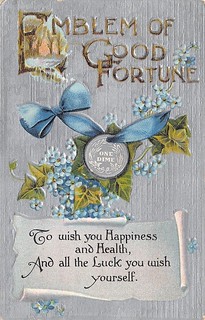
PREV ARTICLE
NEXT ARTICLE
FULL ISSUE
PREV FULL ISSUE
FOLLOW-UP: HOLED COINS AS SLAVE CHARMSEarlier this year Abigail Cooper, Assistant Professor of History at Brandeis University reached out to E-Sylum readers for information on holed coins as slave charms. She provided this follow-up. -Editor I just wanted to express my appreciation to you and to your readers for their insights back in June. I'm revising the section on currency and folk beliefs now, and the printouts of your newsletter are good company.
For whatever it is worth, slaves did indeed have access to coined money, even as slaves, as many were allowed to sell items they grew in their own gardens at market on days off and/or "hired out" (the owner leased their labor) to someone else and were in some cases permitted to keep some of what they earned. It's interesting. Slave owners were often using their slaves as collateral and didn't have cash on hand so had to get loans from their slaves to buy goods, pay debts, etc. Christmas time was known as a year-end celebration because (as it followed the harvest) owners were able to give the "gift" of paying back the loaned money they borrowed from their slaves. Of course, there were plenty of enslaved people who never did have any reason to handle money, but they likely knew someone who did. In a time as thrilling and frightening as wartime emancipation (and in a South where Confederate currency became increasingly worthless), I am grappling with how freed people evaluated the value of a dime as a good luck charm and/or/versus as a piece of silver currency. I did also see the Davidson article but truly appreciated the precise interaction your readers demonstrated, and all I have on archaeological studies on dimes and African American communities is from Davidson and the McBrides in Kentucky, so if any other digs cross your desk, keep me posted, please. Again, thanks to you and your readers for the attention, interest, and insights. We're glad to be able to help. This is a fascinating topic that most of us in the numismatic field were unaware of. See the earlier articles for more information, and keep your eyes peeled for new citations and datapoints. -Editor To read the earlier E-Sylum articles, see:  Wayne Homren, Editor The Numismatic Bibliomania Society is a non-profit organization promoting numismatic literature. See our web site at coinbooks.org. To submit items for publication in The E-Sylum, write to the Editor at this address: whomren@gmail.com To subscribe go to: https://my.binhost.com/lists/listinfo/esylum All Rights Reserved. NBS Home Page Contact the NBS webmaster 
|
